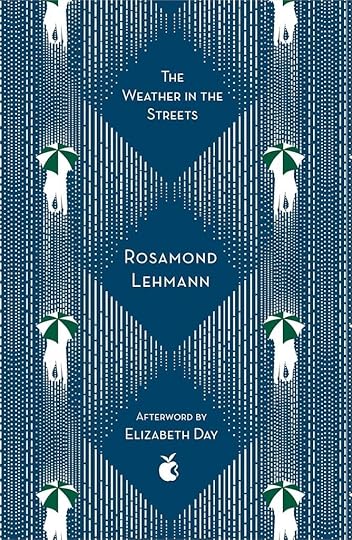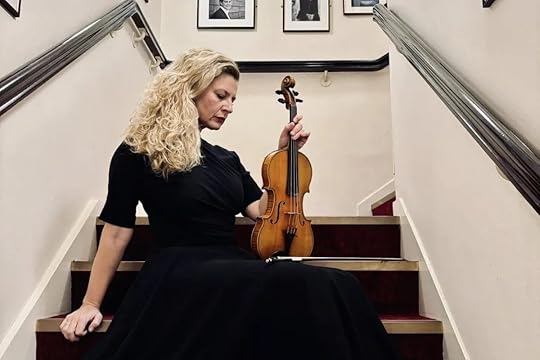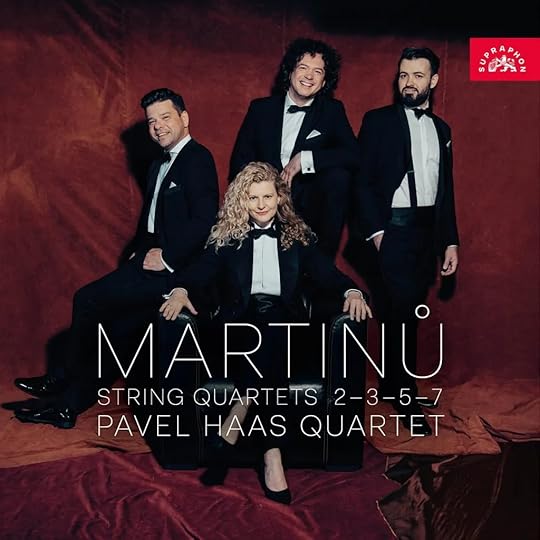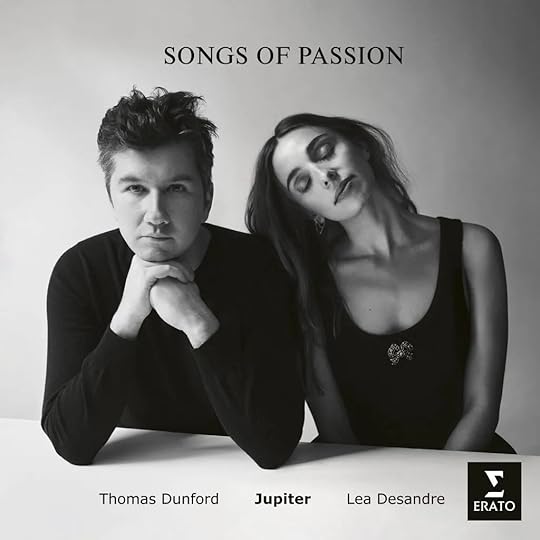Peter Smith's Blog
November 22, 2025
Footnotes to a long month: Books of the year?
Not the best few weeks. Old people have health issues. Who knew? We were planning to go to Italy in a week or so, in particular to see the wonderful-sounding Fra Angelico exhibition at Palazzo Strozzi. Hopefully we will still be able to catch that before it ends in late January. But who knows?
My mind hasn’t exactly been laser-focused, then, on logical matters. In fact, I’ve been doing a lot of decorating instead, as concentrating on the tasks in hand (a lot of prep work needed in a late Victorian house) is very helpfully distracting and de-stressing. So it has all been Farrow and Ball rather than Florentine Madonnas.
The category theory book ends with an apt quotation from Louise Glück’s poem ‘Afterword’: “Reading what I have just written, I now believe / I stopped precipitously, so that my story seems to have been / slightly distorted, . . .”. But the book is already almost five hundred pages long, and stopping very much less precipitously would make it markedly longer again. Still, the current last chapter keeps nagging at me and — needs must — I find myself expanding some of the sections. It’s not that I want to significantly change the general line about ETCS; but the discussion could certainly be clearer (and perhaps give more pointers too for those who want to explore the final themes further). Currently I’m brooding about just what we should make of the fact that — suitably augmented with a Replacement-like axiom — ETCS is in fact almost bi-interpretable with ZFC. When I’m a bit happier with it, I will put online the revised final chapter (in fact, now split into two chapters), to invite comments while I’m finishing minor revisions to the rest of the book. As I said before, I hope to have a complete new version done and dusted early in the new year.
Already, as December approaches, those books-of-the-year pages have started appearing. No less than sixty-six contributors to the Times Literary Supplement offer their recommendations in the last issue. Choices of highly variable degrees of attractiveness. A couple of novels have gone on my list of possible titles to browse next time I’m in Heffers. But almost nothing makes we want to rush to the bookshop — except that A.E. Stallings (I’m a great admirer) very warmly praises Wellwater by Karen Solie (a name new to me), so I’ll certainly look for that.
The book which happens to be recommended most often is The Poems of Seamus Heaney. But am I alone in finding massive volumes of poetry — in this case, over a thousand pages — often dauntingly off-putting? I think I’d much rather look out for a few more of Heaney’s individually published slim collections to add to the ones we already have.
Those sixty-six contributors must mention almost a hundred and fifty recent books. I’ve read — or more accurately, read in part — just three. Is that a depressingly low strike-rate? I confess I didn’t get very far with Elif Shafak’s There are Rivers in the Sky (much as though I enjoyed a couple of her earlier novels). And more forgivably, I have only read parts of Stefan Collini’s Literature and Learning — the history of English studies in Britain is not particularly my topic, but I always admire Collini’s writing, and the theme of the rise and fall of a certain conception of the critical enterprise interests me. The third recommended book, though, I’ll most certainly finish. I’m slowly reading, two or three poems at a time, and am almost at the end of Sarah Howe’s wonderful Foretokens, the follow-up (after ten years) to her prize-winning first collection Loop of Jade. Quite exceptional.

So what else would I have recommended as my books of the year?
Perhaps Andrew Graham-Dixon’s Vermeer: A Life Lost and Found became available too late for our TLS contributors to judge; but I’m devouring it. And as for novels? The most recent ones I’ve read seem to have been the most disappointing (how on earth did Andrew Miller’s pedestrian yet prize-winning, Booker-shortlisted, The Land in Winter garner such praise?). No, my fiction read of the year — Tolstoy aside! — has to be Rosamond Lehmann’s 1936 The Weather in the Streets. The sheer pleasure to be had from her writing beats anything you get in the likes of Andrew Miller by a country mile.
The post Footnotes to a long month: Books of the year? appeared first on Logic Matters.
November 1, 2025
Categorial update?
I’m slowly working on a corrected update of Introducing Category Theory, perhaps for early in the new year. But you can today download a new PDF version, without any of the revised content, but now with the bookmarks for chapters and sections usefully giving numbers as well as headings.
Heaven knows why that isn’t the hyperref package default. As someone very sensibly pointed out, having the PDF sidebar bookmarks numbered surely makes navigation easier — and one line of code does the trick.
The post Categorial update? appeared first on Logic Matters.
October 29, 2025
Not Bergamo, Turing, PHQ again
 Veronika Jarůšková, PHQ, at Wigmore Hall
Veronika Jarůšková, PHQ, at Wigmore HallWe were supposed to be in Bergamo for a few days. But when it came near the time, neither of us were feeling up to going — was it a recurrence of Covid?
It was a rather good thing that we didn’t set off, as whatever virus it was led to sudden after-effects a week later for Mrs Logic Matters, leading to a short hospitalization, and a very distracting and worrying few days. But seemingly all has been quickly sorted. Hooray for NHS emergency medicine again. Though both of us are left decidedly weary.
In the circumstances, and with some stress-induced brain fog, logic hasn’t exactly been at the front of my mind. Certainly I’ve not been in the mood for writing. But I have had occasion over the last day or two to be thinking a bit about Turing and his epochal 1936 paper. So let me pass on a recommendation of a really excellent fairly recent piece which so helpfully and lucidly explains what is (and what isn’t) going in Turing’s paper — namely Joel David Hamkins and Theodor Nenu’s ‘Did Turing prove the undecidability of the halting problem?’. Warmly recommended if you don’t know it. And perhaps also read §§2.3–2.5 of Peter Millican’s ‘Alan Turing and Human-Like Intelligence’, where §2.5 in particular offers a plausible reconstruction of the line of thought leading to key features of Turing’s paper. (Definitely to be mentioned in the relevant section of the next edition of the Study Guide.)
Earlier in the summer, the Pavel Haas Quartet played at the East Neuk festival. There is a recording now on BBC Sounds of their performances of the first Janáček String Quartet, and of the Schubert Quintet (with Ivan Vokáč as the second cellist). Stunning as usual.
The post Not Bergamo, Turing, PHQ again appeared first on Logic Matters.
October 16, 2025
Two Ph.D. studentships
Briefly, Thomas Forster tells me that he has acquired funding for two studentships in Wellington NZ (a delightful place!) for students who want to do a Ph.D. in set theory, in particular working with him on NF or perhaps some adjacent topic. He has an intriguing page of possible thesis topics here. Please spread the word if you have suitable students — and for more details, email Thomas.
The post Two Ph.D. studentships appeared first on Logic Matters.
October 6, 2025
A very short, very blunt, book note

An accessible, very readable, well-motivated, zestful book on ordinal analysis and proof theory would be a very good thing to have. Arai’s Ordinal Analysis with an Introduction to Proof Theory isn’t it. By a country mile. (I was asked for a verdict: so here it is.)
Let’s ignore the fact that there are far too many garbled non-sentences such as “We denote  instead of
instead of ![A[x/a]](https://i.gr-assets.com/images/S/compressed.photo.goodreads.com/hostedimages/1759822094i/37284546.png) when no confusion likely occurs” (p. 2). Let’s pretend the book has been translated into a closer approximation to English. It may for all I know be packed from end to end with technical truths. But that is little recommendation if it remains dreadfully hard-going, a very paradigm of how not to write an enjoyable and attractively helpful introduction to its topic. Who on earth is it intended for? If a reasonably logic-literate reader like myself finds it rebarbative, what hope a graduate student wanting to learn some proof theory?
when no confusion likely occurs” (p. 2). Let’s pretend the book has been translated into a closer approximation to English. It may for all I know be packed from end to end with technical truths. But that is little recommendation if it remains dreadfully hard-going, a very paradigm of how not to write an enjoyable and attractively helpful introduction to its topic. Who on earth is it intended for? If a reasonably logic-literate reader like myself finds it rebarbative, what hope a graduate student wanting to learn some proof theory?
Not that this sort of thing is so very exceptional: it is depressing how badly written many maths books are. But you can certainly cross this one off your Christmas list.
The post A very short, very blunt, book note appeared first on Logic Matters.
October 4, 2025
Footnotes to a fortnight: Category mistakes, Dutch courtyards, Martinů

Most of the writing I have actually done this last week or so has been in tinkering with the category theory notes. For, sad to relate, I still find myself occasionally working through them. Until yesterday, however, it has just been a matter of making small changes for clarity and readability, and correcting a few trivial typos, with a view to making an updated version available later in the year.
But I have just been alerted to a non-trivial error in the current version (thanks to Edelcio Gonçalves de Souza of São Paulo). As it happens this is very timely, as the mistake occurs only a couple of chapters further on from where my re-readings had reached. So at least I am in the right frame of mind to be able readily to deal with it.
What’s the problem? Definition 95 says that in a category with a subobject classifier and an initial object 0, we can define a “falsehood” arrow  as the characteristic arrow for
as the characteristic arrow for  . But that’s not good enough: if the characteristic arrow is to exist we need
. But that’s not good enough: if the characteristic arrow is to exist we need  to be monic. So Definition 95 should add a suitable condition to ensure that that arrow is indeed monic, the natural candidate being that we are dealing with a cartesian closed category. In fact the following theorem is explicitly about such categories; and not too much damage is done because the later examples where
to be monic. So Definition 95 should add a suitable condition to ensure that that arrow is indeed monic, the natural candidate being that we are dealing with a cartesian closed category. In fact the following theorem is explicitly about such categories; and not too much damage is done because the later examples where  arrows appear in Chapter 23 do also involve cartesian closed categories (though that isn’t spelt out properly).
arrows appear in Chapter 23 do also involve cartesian closed categories (though that isn’t spelt out properly).
But still some work needs to be done sorting things out more carefully. The material in Chapter 23 was originally much later in the book, in the context of talking about toposes, which are of course always cartesian closed. Evidently I forgot to explicitly pull forward all the needed assumptions when I moved the material to the current position. So many thanks to Edelcio for spotting this and for letting me know.
When we were in London a couple of weeks ago, we visited some of the Dutch rooms in the National Gallery — not least, to see once again their delightful, cheeringly humane, paintings by Pieter de Hooch, especially the The Courtyard of a House in Delft and A Woman and her Maid in a Courtyard. Which prompted me to get a second hand copy of one of the only books on the artist, Pieter de Hooch 1629–1684, an exhibition catalogue published almost thirty years (beautifully produced, as so often, by Yale UP). I have been enjoying this a great deal — the text is a bit stolid (the style of catalogue-writing has lightened with the years) but is very illuminating, and the full-page reproductions of the forty-one pictures by de Hooch in the original exhibition are just terrific. For calming relief after a bit of doom-scrolling, it’s hard to beat an art book like this.
There is a spectacular new CD from the Pavel Haas Quartet. Since their founder violist Pavel Nikl so sadly had to leave the PHQ because of family illness, three violists came and went in what must have been a distressingly unsettling way for the rest of the PHQ — so they drew breath and spent more than a year before settling on the young Slovak player Šimon Truszka as their new permanent member, with (it seems) huge success. I’ve now seen the quartet performing in its new line-up three times, and to my naive ears, Šimon Truszka is not only a wonderful player but a wonderful fit. And now comes the first CD with him as the violist, a recording of four of Martinů’s string quartets. Not the most immediately ingratiating music, but on repeated listening it becomes compelling. And the playing is surely at a stunning level. But don’t take my word for it – here’s a rave review from the Presto site. (Presto also have an interview with Veronika and Peter about Martinů — in which you learn they first met aged eleven, with Peter playing a piece by Martinů.)
I love the cover of the CD. It is difficult not to hear Veronika’s laughter a moment later.
And — an additional major treat! — here for the next month is a video of the PHQ playing at Wigmore Hall this week to great acclaim, starting with Martinů’s third quartet (followed by quartets by Korngold and Dvořák). Enjoy!
The post Footnotes to a fortnight: Category mistakes, Dutch courtyards, Martinů appeared first on Logic Matters.
Footnotes to a couple of weeks: Category mistakes, Dutch courtyards, Martinů

Most of the writing I have actually done this last week or so has been in tinkering with the category theory notes. For, sad to relate, I still find myself occasionally working through them. Until yesterday, however, it has just been a matter of making small changes for clarity and readability, and correcting a few trivial typos, with a view to making an updated version available later in the year.
But I have just been alerted to a non-trivial error in the current version (thanks to Edelcio Gonçalves de Souza of São Paulo). As it happens this is very timely, as the mistake occurs only a couple of chapters further on from where my re-readings had reached. So at least I am in the right frame of mind to be able readily to deal with it.
What’s the problem? Definition 95 says that in a category with a subobject classifier and an initial object 0, we can define a “falsehood” arrow  as the characteristic arrow for
as the characteristic arrow for  . But that’s not good enough: if the characteristic arrow is to exist we need
. But that’s not good enough: if the characteristic arrow is to exist we need  to be monic. So Definition 95 should add a suitable condition to ensure that that arrow is indeed monic, the natural candidate being that we are dealing with a cartesian closed category. In fact the following theorem is explicitly about such categories; and not too much damage is done because the later examples where
to be monic. So Definition 95 should add a suitable condition to ensure that that arrow is indeed monic, the natural candidate being that we are dealing with a cartesian closed category. In fact the following theorem is explicitly about such categories; and not too much damage is done because the later examples where  arrows appear in Chapter 23 do also involve cartesian closed categories (though that isn’t spelt out properly).
arrows appear in Chapter 23 do also involve cartesian closed categories (though that isn’t spelt out properly).
But still some work needs to be done sorting things out more carefully. The material in Chapter 23 was originally much later in the book, in the context of talking about toposes, which are of course always cartesian closed. Evidently I forgot to explicitly pull forward all the needed assumptions when I moved the material to the current position. So many thanks to Edelcio for spotting this and for letting me know.
When we were in London a couple of weeks ago, we visited some of the Dutch rooms in the National Gallery — not least, to see once again their delightful, cheeringly humane, paintings by Pieter de Hooch, especially the The Courtyard of a House in Delft and A Woman and her Maid in a Courtyard. Which prompted me to get a second hand copy of one of the only books on the artist, Pieter de Hooch 1629–1684, an exhibition catalogue published almost thirty years (beautifully produced, as so often, by Yale UP). I have been enjoying this a great deal — the text is a bit stolid (the style of catalogue-writing has lightened with the years) but is very illuminating, and the full-page reproductions of the forty-one pictures by de Hooch in the original exhibition are just terrific. For calming relief after a bit of doom-scrolling, it’s hard to beat an art book like this.
There is a spectacular new CD from the Pavel Haas Quartet. Since their founder violist Pavel Nikl so sadly had to leave the PHQ because of family illness, three violists came and went in what must have been a distressingly unsettling way for the rest of the PHQ — so they drew breath and spent more than a year before settling on the young Slovak player Šimon Truszka as their new permanent member, with (it seems) huge success. I’ve now seen the quartet performing in its new line-up three times, and to my naive ears, Šimon Truszka is not only a wonderful player but a wonderful fit. And now comes the first CD with him as the violist, a recording of four of Martinů’s string quartets. Not the most immediately ingratiating music, but on repeated listening it becomes compelling. And the playing is surely at a stunning level. But don’t take my word for it – here’s a rave review from the Presto site. (Presto also have an interview with Veronika and Peter about Martinů — in which you learn they first met aged eleven, with Peter playing a piece by Martinů.)
I love the cover of the CD. It is difficult not to hear Veronika’s laughter a moment later.
And — an additional major treat! — here for the next month is a video of the PHQ playing at Wigmore Hall this week to great acclaim, starting with Martinů’s third quartet (followed by quartets by Korngold and Dvořák). Enjoy!
The post Footnotes to a couple of weeks: Category mistakes, Dutch courtyards, Martinů appeared first on Logic Matters.
September 20, 2025
Songs of passion.

A great couple of days in London. The high point, a quite outstanding evening at Wigmore Hall — the wondrous Lea Desandre and Thomas Dunford (and the Jupiter ensemble) performing Dowland and Purcell.
Their new CD is terrific, and the live version of basically the same programme was even more so. One of the very best concerts we have been to in recent years, with Lea Desandre absolutely compelling. The barely controlled emotion as she sung Purcell’s “O let me weep, for ever weep” — interweaving with Louise Ayrton’s touchingly plangent baroque violin — made for an extraordinary experience. And as for Dido’s Lament …
Not that the concert was all sombre or doleful. For example, “O let me weep …” was followed immediately with sunlight in “Now the night is chased away.” Here’s a snatch from their rehearsal of that earlier in the day. And as you’ll see, while Jupiter are joined by four singers on the CD, in the concert — quite delightfully — the band themselves also provided, as it were, Lea’s occasional backing vocals. An evening to remember for a long time.
The post Songs of passion. appeared first on Logic Matters.
Footnote to the week: Songs of passion.

Not a logical week, but a great couple of days in London. The high point, a quite outstanding evening at Wigmore Hall — the wondrous Lea Desandre and Thomas Dunford (and the Jupiter ensemble) performing Dowland and Purcell.
Their new CD is terrific, and the live version of basically the same programme was even more so. One of the very best concerts we have been to in recent years, with Lea Desandre absolutely compelling. The barely controlled emotion as she sung Purcell’s “O let me weep, for ever weep” — interweaving with Louise Ayrton’s touchingly plangent baroque violin — made for an extraordinary experience. And as for Dido’s Lament …
Not that the concert was all sombre or doleful. For example, “O let me weep …” was followed immediately with sunlight in “Now the night is chased away.” Here’s a snatch from their rehearsal of that earlier in the day. And as you’ll see, while Jupiter are joined by four singers on the CD, in the concert — quite delightfully — the band themselves also provided, as it were, Lea’s occasional backing vocals. An evening to remember for a long time.
The post Footnote to the week: Songs of passion. appeared first on Logic Matters.
September 13, 2025
Greek readings
What have I been reading this week? I finished The Voyage Home, the most recent in Pat Barker’s wonderful series re-imaging episodes from the Trojan War. This time, it’s Agamemnon’s voyage home after the war, and his death at the hands of Clytemnestra and Aegisthus, which is re-told (mostly as seen through the eyes of a captive maid to Cassandra, the Trojan princess taken by Agamemnon as a trophy concubine). But you very probably know that, and won’t at all need me to tell you just how good Pat Barker’s trilogy is. So let me say something instead about a different book, which you might not know about.

I am a great admirer of A.E. Stallings poetry — the way her enticing surface formal play with rhyme and metre is married to depth and insight, the way she often gives new life to ancient voices (Persephone, Daphne, Penelope, …) yet her poems “come out of life’s dailiness”. Her This Afterlife: Selected Poems (2022) is full of subtle inventiveness, and — as a reviewer put it — she “demonstrates that in the right poet’s hands, the putative everydayness of the hic et nunc can be transformed into something every bit as rich and strange as even the most ancient myths.”
But you probably know that too! However I only recently noted that Stallings’ had a new book out in April. Her Frieze Frame is on the rich and strange history of the Parthenon Marbles, and how “poets, painters, and their friends framed the debates around Elgin” and his acquisition (or should that be ‘looting’?) of the Marbles. I have just finished this too, and warmly recommend it.
The book began as a short lockdown essay, and has grown to become a quite fascinating scrapbook full of picaresque detail — ridiculous, infuriating, distressing, touching in turn. And as you’d expect, the writing can be wonderful. How about this, on the actress Melina Mercouri who became Greek Minster of Culture, and a passionate advocate for the return of the Marbles: “The Greeks loved her for this campaign and activism, quite apart from her acting; the Acropolis Metro Station is decorated with a famous photograph of her holding a summer bouquet, standing below the Parthenon on the Acropolis, so that she seems of a piece with one of the sturdy corner columns. In her fawn-colored trench coat, the same pale tawny color as the Pentelic marbles, with her weathered statuesque beauty, she could be a Caryatid on holiday, letting the wind run through her faded blonde hair and clutching the fresh flowers of the eternally recurring Greek spring.” Even if you know the basic story, this is just a terrific read.
I mused here a few weeks ago that it would be really good if there were a student-orientated(?) book which “played through some of the greatest hits from logic’s back catalogue” with zip and zest, engendering rather more excitement than e.g. the dutiful efforts in The History of Philosophical and Formal Logic (Bloomsbury 2017). Which got me wondering what an enticing chapter on Aristotle’s logic might look like. So the man himself has provided my other Greek reading this week. Along with a stash of hugely illuminating related articles, in particular by the estimable Jonathan Barnes.
Which has been pretty enjoyable — though it has certainly distracted me from what I was planning to be doing (getting back to updating the Study Guide) while also leaving me even more unsure how you’d do justice to Aristotle in a reasonably short piece.
It did strike me, though, that something that might be fun to do is to it take the often telegraphic lecture-notes that comprise the dozen pages of APr 1,2, 4–7 and — as it were — write out the lectures in a modern-reader-friendly way (or at least lectures as might have been given by a counterpart of Aristotle in some not too remote possible world). A devoted ancient philosophy student, with the translations and lengthy commentaries of Robin Smith and of Gisela Striker to hand (and ideally the original text too), can work things out. However that’s a big ask for someone whose first interest is in logic but who would be intrigued to get a real sense of how things started though without putting in too much time and energy.
A cheering small (very small) moment at the end of week. A mini Amazon review of the category theory book arrives online. “A superb introduction!” OK: I can raise a glass to that.
The post Greek readings appeared first on Logic Matters.



